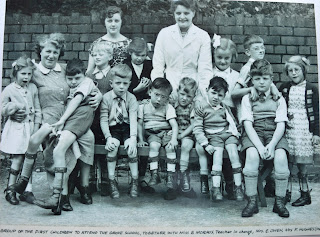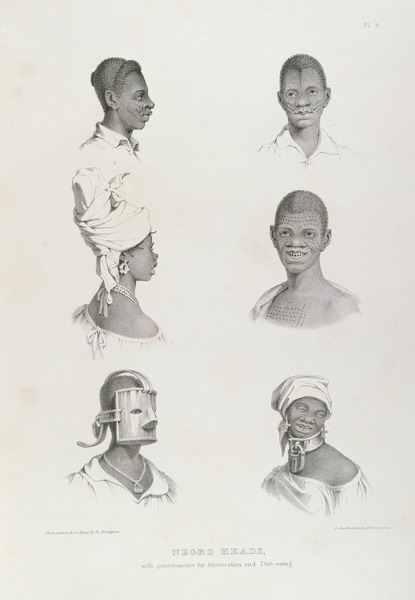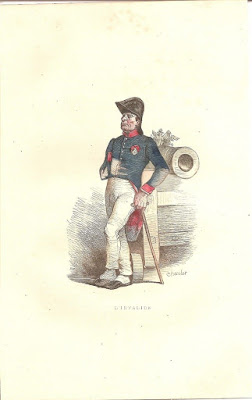Parents on the March: Disability, Education and Parent-Activists
By Teresa Hillier, Swansea University
At a time of great social change in mid-20th century Britain there was a series of parliamentary reforms which aimed to help rebuild a war-torn society. These included a focus on education with the 1944 Education Act aiming to provide equality of opportunity to children. However, many children with cerebral palsy and related disabilities were classed as ineducable under this Act. This led to parents campaigning on behalf of their children against this perceived injustice. These parents were pioneers and disability activists, drawing public attention to the exclusion from education of their children. As a result of this direct action many parent-led organisations were established during the 1950s one of which is Longfields Association originally known as Swansea and District Spastic Association.
Legacy of Longfields is a two-year research project that will examine and share the history of the Association. The organisation was set up in 1952 by a group of parents of children with cerebral palsy to provide them with the opportunity for education. This led to the first school of this kind in Wales opening in April 1953.
The idea for recording the history of Longfields began while I was employed there from 1999 to 2004. I became more aware of the history of the organisation, the effort of the parents and the part that the organisation had played in disability history and the history of Swansea. The catalyst for this project was the sudden closure of the organisation in 2011. After a few years and changing circumstances a successful Heritage Lottery Fund application was made. The application highlighted the fact that only limited formal research had been undertaken on the Association and there was a danger it would be forgotten following the closure. The effort of campaigning by parents at that time is largely overlooked but through the project their story can be told. Tribute can be paid to the founder members and those who gave tirelessly of their time. Through my involvement, I knew that individuals cared passionately about Longfields and it touched many lives. Those involved in the early days are elderly and without the project their memories would be lost.
In 1955 the school moved to new premises where the first ‘spastic nursery’ in Wales was opened. As well as offering education for these children, Longfields provided job opportunities to some of its former pupils at the Work Centre in 1962 and the Occupational Therapy Unit which opened in December 1967. After many successful years providing services to individuals throughout the Swansea area the organisation closed in 2011. The project is still at an early stage but engaging with individuals who attended the centre, their families and friends has provided some valuable resources such as video footage, a scrapbook and press cuttings.
Researching the history of this organisation reveals how successful it was in engaging the public to support its cause. An extract, by Bill Paton, from the first Year Book of the Association, printed in 1960 illustrates the passion that the parents had in forming the organisation. The aim to engage with the public on disability issues was one of their key objectives. To achieve a wider impact, they gave talks to community groups, lobbied their MP and local council. Articles in local and national press, together with fund raising activities, highlighted the work of the organisation and contributed to the debate around the education of children with cerebral palsy.
Not content with working at a local level the Association engaged with other established organisations to campaign nationally. Affiliation to the National Spastics Society (NSS) resulted in Bill Paton becoming a member of the Society’s Executive Committee. This meant that the Association had more support for their activities and access to a wider range of resources. The NSS succeeded in getting ‘parents on the march’. Their five aims were
To achieve these aims the NSS brought the ‘plight of spastics’ to public attention using statistics to compare the number of children with cerebral palsy against those with other disabilities. By displaying images of children as objects of pity, using ‘tragedy’ to evoke sympathy they enhanced fundraising. A targeted media campaign and production of a documentary film, Chance of Their Lives (1952) further highlighted the issues.
As part of the project, oral histories will be collected to not only discover individual memories of Longfields but to reveal the experiences of those who attended the organisation from childhood to adulthood. Challenges arise as some of these individuals cannot participate unaided and so their contribution may be influenced by a family member. Memories can become distorted over time and recollections may be coloured by a desire to present a more idyllic past.
My research has begun to bring the origins of Longfields to life. Despite the problems described above, collection of oral histories and the input of pupils from local schools will enable a more dynamic memory of Longfields to be created. The project will deliver an exhibition at the National Waterfront Museum and an online accessible archive. Elements of the exhibition will then be made available to local schools and community groups taking the history of Longfields into the communities it served.
Recommended Citation:
Teresa Hillier (2016): Parents on the March: Disability, Education and Parent-Activists. In: Public Disability History 1 (2016) 19.
All pictures from West Glamorgan Archives in Swansea
At a time of great social change in mid-20th century Britain there was a series of parliamentary reforms which aimed to help rebuild a war-torn society. These included a focus on education with the 1944 Education Act aiming to provide equality of opportunity to children. However, many children with cerebral palsy and related disabilities were classed as ineducable under this Act. This led to parents campaigning on behalf of their children against this perceived injustice. These parents were pioneers and disability activists, drawing public attention to the exclusion from education of their children. As a result of this direct action many parent-led organisations were established during the 1950s one of which is Longfields Association originally known as Swansea and District Spastic Association.
Legacy of Longfields is a two-year research project that will examine and share the history of the Association. The organisation was set up in 1952 by a group of parents of children with cerebral palsy to provide them with the opportunity for education. This led to the first school of this kind in Wales opening in April 1953.
 |
| First children to attend |
The idea for recording the history of Longfields began while I was employed there from 1999 to 2004. I became more aware of the history of the organisation, the effort of the parents and the part that the organisation had played in disability history and the history of Swansea. The catalyst for this project was the sudden closure of the organisation in 2011. After a few years and changing circumstances a successful Heritage Lottery Fund application was made. The application highlighted the fact that only limited formal research had been undertaken on the Association and there was a danger it would be forgotten following the closure. The effort of campaigning by parents at that time is largely overlooked but through the project their story can be told. Tribute can be paid to the founder members and those who gave tirelessly of their time. Through my involvement, I knew that individuals cared passionately about Longfields and it touched many lives. Those involved in the early days are elderly and without the project their memories would be lost.
 |
| Swansea mayor presents key to new school 1952 |
In 1955 the school moved to new premises where the first ‘spastic nursery’ in Wales was opened. As well as offering education for these children, Longfields provided job opportunities to some of its former pupils at the Work Centre in 1962 and the Occupational Therapy Unit which opened in December 1967. After many successful years providing services to individuals throughout the Swansea area the organisation closed in 2011. The project is still at an early stage but engaging with individuals who attended the centre, their families and friends has provided some valuable resources such as video footage, a scrapbook and press cuttings.
Researching the history of this organisation reveals how successful it was in engaging the public to support its cause. An extract, by Bill Paton, from the first Year Book of the Association, printed in 1960 illustrates the passion that the parents had in forming the organisation. The aim to engage with the public on disability issues was one of their key objectives. To achieve a wider impact, they gave talks to community groups, lobbied their MP and local council. Articles in local and national press, together with fund raising activities, highlighted the work of the organisation and contributed to the debate around the education of children with cerebral palsy.
 |
| Extract from the first Year Book of the Association |
Not content with working at a local level the Association engaged with other established organisations to campaign nationally. Affiliation to the National Spastics Society (NSS) resulted in Bill Paton becoming a member of the Society’s Executive Committee. This meant that the Association had more support for their activities and access to a wider range of resources. The NSS succeeded in getting ‘parents on the march’. Their five aims were
- Tell Britain about Spastics
- Discover the Spastics and their parents and bring them into Groups
- Increase the number of Parent’s Groups to cover England and Wales
- Unite these groups in one strong and effective body Raise money to help set up treatment, schooling and social centres more quickly than if the job was left entirely to Local Authoritie
To achieve these aims the NSS brought the ‘plight of spastics’ to public attention using statistics to compare the number of children with cerebral palsy against those with other disabilities. By displaying images of children as objects of pity, using ‘tragedy’ to evoke sympathy they enhanced fundraising. A targeted media campaign and production of a documentary film, Chance of Their Lives (1952) further highlighted the issues.
As part of the project, oral histories will be collected to not only discover individual memories of Longfields but to reveal the experiences of those who attended the organisation from childhood to adulthood. Challenges arise as some of these individuals cannot participate unaided and so their contribution may be influenced by a family member. Memories can become distorted over time and recollections may be coloured by a desire to present a more idyllic past.
My research has begun to bring the origins of Longfields to life. Despite the problems described above, collection of oral histories and the input of pupils from local schools will enable a more dynamic memory of Longfields to be created. The project will deliver an exhibition at the National Waterfront Museum and an online accessible archive. Elements of the exhibition will then be made available to local schools and community groups taking the history of Longfields into the communities it served.
Recommended Citation:
Teresa Hillier (2016): Parents on the March: Disability, Education and Parent-Activists. In: Public Disability History 1 (2016) 19.
All pictures from West Glamorgan Archives in Swansea


